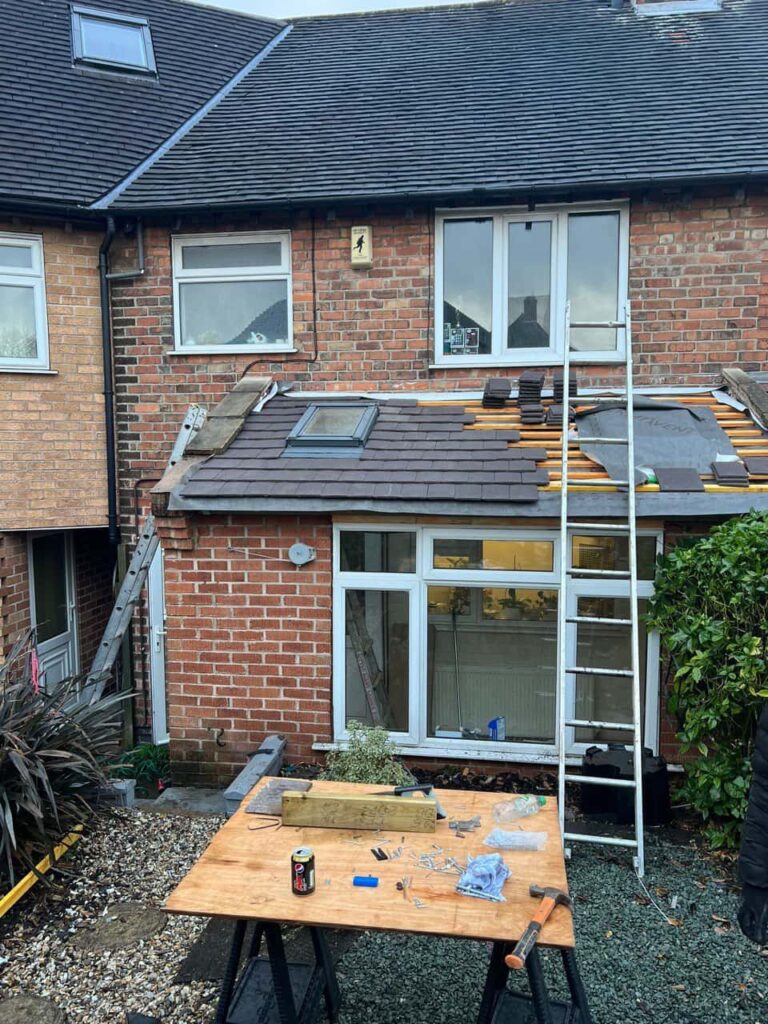Introduction: When it comes to roofing, many homeowners primarily focus on the outer layer of shingles or tiles, often overlooking the crucial elements. One such essential component is the roof underlayment. At Wingerworth Roofing Repairs, understanding the importance of underlayment can significantly impact the longevity and effectiveness of your roof. Here’s why roof underlayment is pivotal in any roof replacement project.
What is Roof Underlayment?
Roof underlayment is a water-resistant or waterproof barrier material installed directly onto your roof decking beneath the outer roofing materials like shingles or tiles. It is an additional protective layer, safeguarding your home against water infiltration, wind, and other environmental factors.
Types of Roof Underlayment
There are three primary types of roof underlayment commonly used in roofing projects:
- Asphalt-Saturated Felt: Traditionally known as tar paper, this type is made from a blend of asphalt, polyester, or cellulose. It’s an affordable option and provides decent protection against water and wind.
- Rubberised Asphalt: This underlayment offers superior waterproofing due to its high asphalt content and adhesive back. It’s particularly beneficial in areas prone to ice dams and heavy rainfall.
- Synthetic Underlayment: Made from polypropylene or polyethene, synthetic underlayment is lightweight, durable, and tearing-resistant. It offers excellent protection against water and is becoming increasingly popular in modern roofing projects.
The Role of Roof Underlayment
- Water Resistance: The primary function of roof underlayment is to act as a moisture barrier. It prevents water from seeping through to the roof decking, especially in the event of damaged or missing shingles. This added layer of protection is crucial during heavy rainstorms or snowmelt.
- Improved Durability: Underlayment adds an extra layer of protection that can enhance the overall durability of your roof. Shielding the decking from moisture and wind-driven rain helps extend the lifespan of your roofing materials.
- Fire Resistance: Some types of underlayment, particularly synthetic ones, offer additional fire resistance. This can be an essential safety feature, providing extra protection in a fire.
- Temperature Regulation: Roof underlayment can help regulate the temperature within your home. Acting as an additional insulation layer can reduce heat transfer and improve your home’s energy efficiency, potentially lowering your heating and cooling costs.
- Protection During Installation: During the roof replacement process, underlayment provides a temporary shield against weather elements before the final roofing material is installed. This ensures that your home’s roof decking and interior remain dry and protected throughout the project.
Why Underlayment is Crucial in Roof Replacement
- Enhanced Waterproofing: Even the best roofing materials can fail if water penetrates the roof deck. Underlayment provides an additional waterproofing layer, ensuring your home remains dry and protected.
- Preventing Roof Leaks: By acting as a secondary barrier, underlayment helps to prevent leaks that can cause significant damage to your home’s structure, insulation, and interior finishes.
- Meeting Building Codes: In many regions, building codes require the installation of underlayment for new and replacement roofs. Ensuring your roof meets these regulations is vital for both legal compliance and the long-term protection of your home.
- Increasing Roof Lifespan: Investing in high-quality underlayment during roof replacement can increase the lifespan of your entire roofing system. By preventing water damage and reducing wear and tear on the outer roofing materials, underlayment helps prolong your roof’s life.
Conclusion: Roof underlayment is an indispensable component of any roof replacement project. Its role in providing waterproofing, improving durability, and enhancing the overall performance of your roofing system cannot be overstated.
Call us on: 01246 956 395
Click here to find out more about Wingerworth Roofing Repairs
Click here to complete our contact form and see how we can help you with your roofing needs.

